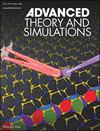Molecular Dynamics Study of Fretting Wear Characteristics of Silicon Nitride Bearings
IF 2.9
4区 工程技术
Q1 MULTIDISCIPLINARY SCIENCES
引用次数: 0
Abstract
To study fretting wear characteristics of silicon nitride bearing. Atomic model of surface fretting wear of silicon nitride bearing is constructed by molecular dynamics method and deep learning self-fitting potential function. First principles are used to match silicon nitride crystal parameters; Dynamic analysis of fretting wear process of nanoscale silicon nitride bearing is realized. Experiment shows that friction force in the Z direction is a maximum of 3.5 nN. The output potential energy 2.31 × 107 eV is 1.63 times that of the y-axis, which is main factor causing the fretting wear. The force perpendicular to the direction of roller and the collar of silicon nitride bearings should be avoided in the process of using or transporting the bearings. Silicon nitride bearing fretting wear process is non-transient elastic stress-strain, along the rolling plane extension, in the roller rolling direction to form a sharp angle shape high strain linear region. Bearing Z direction damage degree increased; Silicon nitride bearing surface layer has 22.47% of the N─Si bond fracture. The study of the fretting wear characteristics of silicon nitride ceramic bearings has a reference value for reducing the surface friction of silicon nitride bearings and improving the life of silicon nitride bearings.

氮化硅轴承微动磨损特性的分子动力学研究
研究氮化硅轴承的微动磨损特性。采用分子动力学方法和深度学习自拟合势函数建立了氮化硅轴承表面微动磨损的原子模型。利用第一性原理对氮化硅晶体参数进行匹配;对纳米级氮化硅轴承微动磨损过程进行了动态分析。实验表明,Z方向的摩擦力最大为3.5 nN。输出势能2.31 × 107 eV是y轴输出势能的1.63倍,是引起微动磨损的主要因素。在使用或运输轴承的过程中,应避免垂直于氮化硅轴承滚子和轴套方向的力。氮化硅轴承微动磨损过程为非瞬态弹性应力-应变,沿滚动平面延伸,在滚子滚动方向形成尖角形状的高应变线形区域。轴承Z方向损伤程度增大;含氮化硅的表层有22.47%的N─Si键断裂。研究氮化硅陶瓷轴承的微动磨损特性,对于降低氮化硅轴承的表面摩擦,提高氮化硅轴承的寿命具有参考价值。
本文章由计算机程序翻译,如有差异,请以英文原文为准。
求助全文
约1分钟内获得全文
求助全文
来源期刊

Advanced Theory and Simulations
Multidisciplinary-Multidisciplinary
CiteScore
5.50
自引率
3.00%
发文量
221
期刊介绍:
Advanced Theory and Simulations is an interdisciplinary, international, English-language journal that publishes high-quality scientific results focusing on the development and application of theoretical methods, modeling and simulation approaches in all natural science and medicine areas, including:
materials, chemistry, condensed matter physics
engineering, energy
life science, biology, medicine
atmospheric/environmental science, climate science
planetary science, astronomy, cosmology
method development, numerical methods, statistics
 求助内容:
求助内容: 应助结果提醒方式:
应助结果提醒方式:


